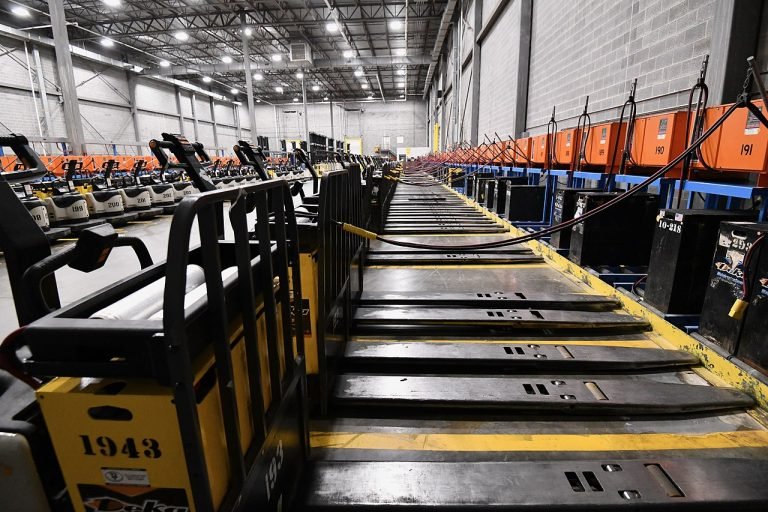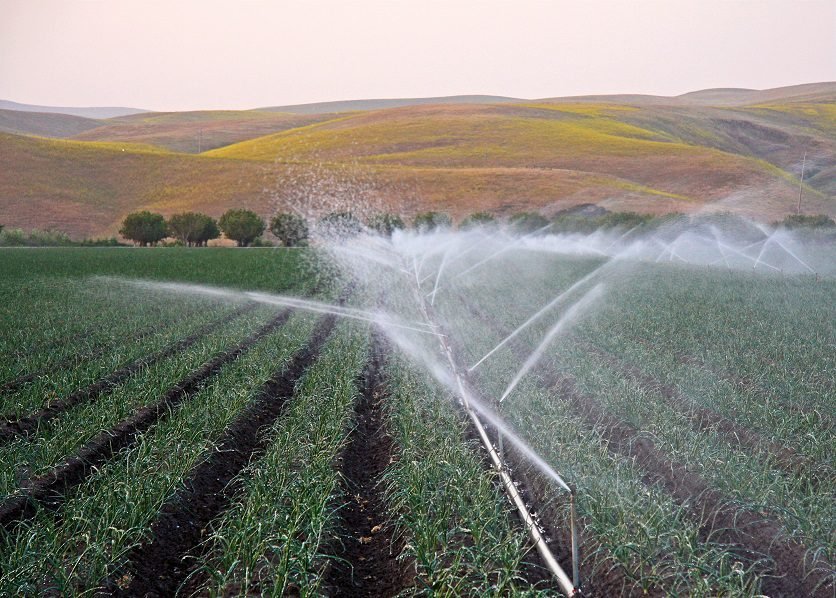
Have you ever stopped to think about how far your food has travelled before it ended up on your plate? Chances are, the answer is no. But food miles – or the distance that food travels from farm to table – are an important consideration when it comes to our diets. In this blog post, we’ll take a closer look at food miles and what they mean for our health and the environment. We’ll also explore some of the myths about food miles that have been circulating in recent years. So read on to learn more!
- What are food miles?
- Why is it important to consider food miles?
- How are food miles calculated?
- What are the benefits of food miles?
- 1. Raise awareness
- 2. Helps understand the food system
- 3. Local food production
- What are the disadvantages of food miles?
- 1. Greenhouse gas emissions
- 2. Increased costs
- 3. Increased risks
- 4. Excessive Energy usage
- 5. Increased competition for local foods
- What are the criticisms against food miles?
- 1. They don’t take into account other environmental impacts
- 2. They can lead to “food milesism”
- 3. They don’t consider different transportation modes
- 4. They don’t consider different stages of the food supply chain
- 5. It diverts attention from other environmental issues
- What are the types of food transportation?
- Final words
- FAQs
What are food miles?
Food miles is a measure of the distance food travels from the point of production to the point of consumption. The concept of food miles has been gaining popularity in recent years as a way to raise awareness about the environmental impact of the modern food system. The average American meal travels over 1500 miles before it reaches the dinner table, and the majority of our food comes from other countries.
The transportation of food requires a significant amount of fossil fuels, ( US contributions ) which contributes to greenhouse gas emissions and climate change. In addition, the long-distance transport of food often results in food waste, as perishable items spoil before they reach their destination. By eating locally produced food, we can significantly reduce our food miles and make a positive impact on the environment.
Why is it important to consider food miles?

There are many reasons why we should consider the food miles associated with our foods, or the distance that they have travelled from where they were produced to where they are consumed. Food quality, safety, and sustainability are all at risk when we focus solely on price and convenience in choosing our foods.
For starters, the quality of food is often diminished when it has been shipped a long distance before being sold. The longer a food sits on a grocery store shelf or in a warehouse before making its way to your plate, the more likely it is to lose nutritional value and flavour. Moreover, foods like fruits and vegetables may eventually even rot or go bad if transported over long distances without proper refrigeration or packaging. So not only does transportation impact the quality of our foods, but it also poses health risks if harmful bacteria and other contaminants are present in those foods when we eat them.
In addition to compromising the quality of our foods, food miles also threaten food safety and sustainability more generally. Producing certain types of foods can have negative impacts on air quality, water supply, and soil health in the regions where they are grown. For example, industrial farming operations often use massive amounts of water to grow grains or raise livestock for meat production. This can lead to water shortages in local communities, as well as soil erosion and other environmental problems.
And finally, the long-distance transport of food also creates a significant amount of greenhouse gas emissions. The United Nations estimates that food-related emissions are responsible for up to 30% of all greenhouse gas emissions, making it one of the leading causes of climate change.
How are food miles calculated?
Food miles are a measure of the distance that food travels from the farm to our plates. Calculating food miles can be complex, as it involves considering many different factors. Generally, it is determined by the total length of air and road journeys taken to get products from the ground to their final destination. This includes factors such as the distance between farms and processing facilities or distribution centres, or the number of stops that products must make along the way.
One complication is that different types and sizes of food items typically cover different distances. For example, food items that are packed in smaller containers will likely travel less than larger items like pallets of produce. Furthermore, foods with shorter shelf lives typically have shorter travel times, since they will not be stored in warehouses for very long before being sold. Another important factor is the mode of transport used to ship goods around the world. For example, products shipped via air transport might move shorter distances than those sent via boat or truck.
Overall, there are many variables involved when we calculate food miles, but it is an important metric that can help us understand more about our food system and its environmental impact. By tracking this information and measuring changes over time, we can gain insights into how we can reduce our impact on the planet.

What are the benefits of food miles?
There are both benefits and drawbacks to food miles. Some of the benefits are:
1. Raise awareness
One of the benefits of food miles is that it helps to raise awareness about the origins of our food. In a globalized world, it can be easy to lose sight of where our food comes from and how it is produced. By considering the distance that our food has travelled, we can begin to appreciate the effort that goes into producing it.
In addition, thinking about food miles can help us to make more informed choices about the food we buy. When we know how far our food has travelled, we can decide whether or not we want to support that type of production. As more consumers become aware of food miles, they will be able to make choices that reflect their values and preferences.
2. Helps understand the food system
The second major benefit of food miles is that they help to give us a better understanding of the food system itself. By tracking the distance that our food travels, we can gain a more precise picture of how the various stages and elements of our food supply work together. For example, as we make decisions about where to buy our groceries or produce, we can consider things like transport modes, proximity to suppliers and demand for local products.
Additionally, food miles can help us better understand our own impact on the environment and possibly make more sustainable choices about what we eat. So whether you are a farmer or a consumer, it is clear that food miles play an important role in giving us useful insights into the way our food system works as a whole.
You can’t improve what you don’t measure.
Free Verified Carbon Calculators.
Erase Your Carbon Footprint in less than 5 Minutes
Personal Carbon Footprint Calculator
Business Carbon Footprint Calculator
3. Local food production
Another benefit of Food Miles is that it makes people prioritise food produced locally. There are many different benefits associated with eating locally produced food, including the fact that fresh food is often more nutrient-rich. In addition to this well-known benefit, local food is also better for the environment due to its reduced food miles. Specifically, producing and distributing food over long distances requires an immense amount of energy, which in turn contributes to CO2 emissions.
Local food production, on the other hand, ensures that fewer resources are wasted on transporting foods across long distances. As a result, eating local can have a positive impact (vs. the impact of meat consumption) both on our health and on our planet by reducing the environmental toll of traditional food distribution systems. So if you’re looking for a way to reduce your negative impact on the world around you, it may be time to go local!
What are the disadvantages of food miles?
There are several major disadvantages associated with food miles or the distance that food travels from farm to plate.
1. Greenhouse gas emissions
One of the most significant issues is that the transportation of food can result in high levels of greenhouse gas emissions. This contributes to climate change and exacerbates global warming, putting the future of our planet at risk.
Additionally, the act of transporting food often requires large amounts of fossil fuels like gasoline and diesel fuel, which further increases carbon footprints and adds to our dependence on non-renewable energy sources.
2. Increased costs
One major disadvantage of food miles is the increased costs that are associated with transporting products over long distances. First of all, transporting goods typically requires more fuel, which means higher energy costs for producers and consumers.
Additionally, due to lower demand and higher shipping requirements, it can be difficult for food producers to secure affordable shipping services. This can leave them facing steep price increases for their products, which in turn are passed along to consumers.
Ultimately, the increased costs associated with increasing food miles are one of the biggest drawbacks of this practice, as they affect both producers and consumers alike. As such, reducing or eliminating these distances should be a key priority for any efforts to build more sustainable food systems in the future.
3. Increased risks
Another disadvantage of food miles is that they can increase the risk of food contamination and pollution. This is because longer transportation distances make it harder to maintain optimal testing and packaging procedures, increasing the risk of pathogens entering a product or chemical residues adhering to fruits and vegetables. What’s more, more time on the road means more opportunities for accidents, which can potentially lead to spillage or other forms of environmental contamination.
Thus, for those concerned about food safety and sustainability, minimizing food miles could be a critical step in reducing overall risks. Ultimately, we must consider both the benefits and drawbacks of shipping long distances before we can fully understand its true impact. But until then, it seems clear that food miles do pose some important risks that we must take into account as we seek to promote a healthy and sustainable food system.
4. Excessive Energy usage
One of the disadvantages of food miles is the amount of energy required to transport food products over long distances. Cold storage technology is typically used for perishable foods or out-of-season foods which means that there is an increased demand for energy in order to maintain the low temperatures needed for these products.
5. Increased competition for local foods
Another potential disadvantage of food miles is that it can increase competition for local foods. In many regions, small-scale farmers and producers have to compete with large-scale commercial operations that can sell their products at a lower price.
As a result, local foods can become more expensive, and small farmers may struggle to stay in business. This can lead to a loss of diversity in the local food supply, as well as fewer jobs and less money circulating in the local economy. Of course, this is not necessarily an issue in all areas, but it is something to be aware of when considering the impact of food miles.
In short, while food miles might seem like a relatively harmless part of our modern food system, they actually come with a number of important downsides that need to be addressed.
What are the criticisms against food miles?
While food miles can be a helpful metric, there are also some limitations to consider. For one thing, food miles do not take into account the different types of impacts that different foods have on the environment. For example, a food item that is shipped over long distances might have a smaller carbon footprint than a locally grown product if it is produced in an energy-intensive way. This is because the emissions from transportation make up a smaller proportion of the total emissions for the long-distance product.
Not all experts agree that food miles are a helpful metric. In fact, some argue that food miles can be misleading and even dangerous. Here are three of the main criticisms levelled against food miles:
1. They don’t take into account other environmental impacts
One of the biggest problems with using food miles as a measure of sustainability is that they don’t take into account other important environmental impacts, such as those associated with land use or water pollution.
2. They can lead to “food milesism”
Another potential drawback of food miles is that they can lead to a form of discrimination known as “food milesism.” This occurs when people judge the sustainability of a food based solely on its transportation distances, without considering other important factors.
3. They don’t consider different transportation modes
One of the main criticisms levelled against food miles is that they fail to take into account the different transportation modes used to transport food. For example, food transported by plane will have a much higher carbon footprint than food transported by ship.
4. They don’t consider different stages of the food supply chain
Another criticism is that food miles don’t account for the different stages of the food supply chain. For example, locally grown food that is then processed and packaged before being transported long distances will have a higher carbon footprint than imported food that is transported directly to the consumer.
5. It diverts attention from other environmental issues
Finally, critics say that the emphasis on food miles diverts attention away from other important environmental issues, such as water use, land use, and waste generation. They argue that if we are truly concerned about reducing our environmental impact, we need to look at the whole picture, not just one small piece of it.
What are the types of food transportation?

There are three main types of food transportation:
- Local
- National
- International
Local food transportation typically involves smaller vehicles such as cars or trucks travelling shorter distances to deliver food to grocery stores, markets, and restaurants.
National food transportation generally uses larger vehicles such as trains or planes to move food across the country. International food transportation usually relies on ships to transport goods from one country to another. The type of transportation used can have a significant impact on the carbon footprint of the food system.
For instance, local food transportation often results in lower emissions than national or international options. However, the overall distance that food travels is also important to consider. In general, the further food needs to travel, the higher the emissions associated with its transportation. As a result, it is important to weigh both the type and distance of transportation when assessing the environmental impact of the food system.
Final words
It’s easy to assume that food miles are always bad for the environment. After all, the further food has to travel, the more greenhouse gases are emitted in the process. However, the truth is a bit more complicated than that. In some cases, transported food can actually be more sustainable than food produced locally. For example, when local agriculture is not feasible due to climate change or other factors, transported food can help to ensure a steady supply of healthy foods. In addition, the food industry has made significant progress in reducing emissions from transportation in recent years. As a result, the impact of food miles on the environment is not as clear-cut as it may first appear.
FAQs

What are the food miles for bananas and dragon fruit?
The average banana travels 2700 miles to reach US supermarkets. And, the majority of dragon fruit consumed in the US is grown in Vietnam and imported, resulting in higher food miles.
How can organic farming make a difference?
Organic farming can make a difference by helping to reduce the carbon cost of food production, supporting environmental science, and encouraging local farmers’ markets. Carbon cost is the relative climate impact of producing and transporting food. Environmental science is the study of how humans interact with their environment. Farmers’ markets are a direct link between farmers and consumers, which helps to encourage local food consumption. The mileage for food consumption is the distance that food travels from farm to table.
It takes less energy to produce organic food closer to home, which reduces the carbon cost of food production. When people choose to purchase organic food at farmers’ markets, they are supporting local farmers and businesses while also reducing the environmental impact of their food choices. The life cycle of organic farm products is generally shorter than that of non-organic products, which means that they have a lower carbon footprint. By choosing organic foods, consumers can help to reduce the carbon cost of food production and make a difference in the fight against climate change.
What are the carbon emissions of processed foods?
Processed foods often have high carbon footprints due to the emissions from farming, manufacturing, and packaging (Wilkinson, 2019). For example, a can of soup has a carbon footprint of about 0.85 kg CO₂e while the same amount of homemade soup has a carbon footprint of about 0.15 kg CO₂e.
What is the definition of sustainable agriculture?
Sustainable agriculture is an approach to crop and livestock production that seeks to balance three main objectives: environmental stewardship, economic profitability, and social and economic equity.
What are the environmental repercussions of transporting foods?
The environmental repercussions of transporting foods are complex and far-reaching. On a basic level, the constant movement of food trucks, delivery vans, and ships contributes to air pollution, which can have negative effects on human health and local ecosystems. In addition, the use of natural resources such as fuel and plastic for transporting foods is not always efficient or sustainable for local economies or the environment as a whole.
Furthermore, the food life cycle is greatly affected by transportation, with food often travelling long distances both domestically and internationally before it reaches consumers. This has implications not only for the carbon costs involved in producing and shipping food but also for relative temperature changes that impact plant growth.

Dean Emerick is a curator on sustainability issues with ESG The Report, an online resource for SMEs and Investment professionals focusing on ESG principles. Their primary goal is to help middle-market companies automate Impact Reporting with ESG Software. Leveraging the power of AI, machine learning, and AWS to transition to a sustainable business model. Serving clients in the United States, Canada, UK, Europe, and the global community. If you want to get started, don’t forget to Get the Checklist! ✅
